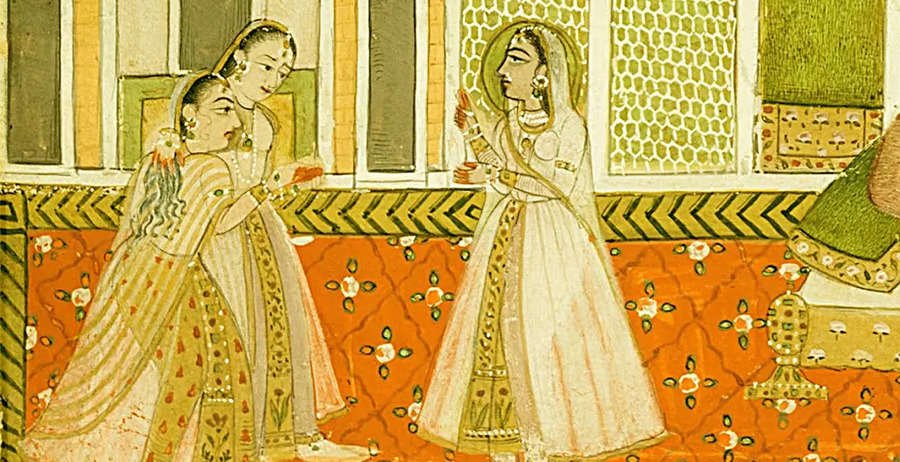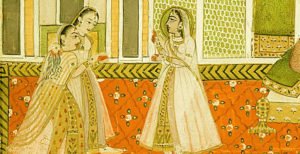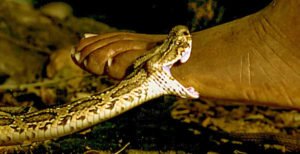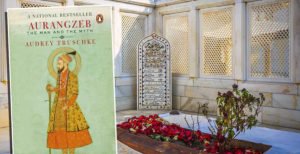How did the princess of Khilji dynasty fall in love with a Brahmin?


Highlights –
During the 15th century, present-day Dhar district of Madhya Pradesh was known as Mandu Sultanate and its Sultan was Naseeruddin Khilji. The Sultan had given the responsibility of Toji i.e. tax collection in Manavar to Govindram Mandloi.
One day Govindram was going to the Raj Bhavan with the tax amount on his bullock cart. All of a sudden, two lions attacked him on the way. The brave man, Govindram drove away both of the lions and then reached the court with the treasure. This story of his bravery also reached the ears of Naseeruddin and the royalty as well. Sultan was very happy and pleased to learn about the bravery of Govindram. Govindram was honored in the Raj Darbar for his bravery and loyalty.
It was on this occasion that Princess Jaitunnisha saw Govindram for the first time. She was mesmerized as soon as she saw him. She couldn’t resist and got the love letter sent to him by her maidservant.
When Naseeruddin came to know about this development, he tried a lot to convince his daughter to rethink. But, Jaitunnisha, who was madly in love with Govindram, refused to listen to anything. At last, the Sultan gave in and called Govindram. Govindram also counted his helplessness and said, ‘I will not be able to provide the same facilities as here.’

But, Jaitunnisha had decided that if the marriage did not happen, she would marry Govindram’s sword. Then she will consider that sword as her husband for life.
Love won and both of them got married under Gandharva custom and tradition. After marriage, Jaitunnisha was named Besarbai. But, before the marriage, the Sultan had put a condition that Jaitunnisha would remain in the palace. The princess also accepted this condition and remained in the palace.
Senior journalist Vinod Kashyap, who has made a documentary on this incident, says, ‘Govindram returned to Manavar after a few days. But, there he died of snake bite. Meanwhile among Hindus too, if someone dies by snakebite, then there is a practice of burying the dead body instead of creating. In some places this custom is still followed till date. But, when Govindram was buried, some people concocted a false story that he had converted and married a Muslim girl, so he was buried and not cremated.
Meanwhile, the unfortunate news of the husband’s death reached Besarbai too. She immediately left for Manavar on a horse. She did the 16 adornments like any other Hindu bride. Then she decided and went to become Sati. When the people of the society came to know about this, they came to stop it. Then Besarbai told about their marriage by Gandharva custom and rituals. She asked for Govindram’s turban from the family members and reached the banks of Maan river.
Dharmendra Mandloi, the 15th generation of Govindram told that a woman of Tamoli caste used to live on the banks of Maan river. She had arranged wood for the pyre. When she brought fire to light the pyre, Besarbai refused to take the fire.
It is said that she lit the pyre with her yogic and siddhi practices and became sati. According to Dharmendra Mandloi, ‘When the family members reached there before becoming a sati, she was told about some rules and regulations. Even today those rules are being followed in our society.
Mandloi Brahmins live around Dhar, Indore and Khandwa. Besarbai’s sati pillar is installed in Shri Khedapati Hanuman temple in Manawar. If any auspicious work is done in the homes of Mandloi society, then Bhog is definitely offered to Besarbai.
In the book ‘Aurangzeb: The Man and the Myth’, historian Andre Traschke has made a mention of breaking the tomb of Nasiruddin Khilji. When Aurangzeb came to know that Khilji had married his daughter to a Hindu, he was very angry. In anger, he broke the grave. Vinod Kashyap tells that the Mandaloi society had saved the Sati pillar from the eyes of Aurangzeb then and even today it is in its original form.

Dharmendra Mandloi also tells some old printed articles and stories. In 1941, Bhaskar Ramchandra Bhalerao was the Subedar. He was posted in Bhind. There was an event related to the Rani of Jhansi, then Bhalerao gave a speech. The British did not like that speech and asked the king to get him transferred. When Bhalerao came to Manawar, here this incident was recorded in the official document of Gwalior.
Important events of history, decisions, achievements etc. were published from the royal printing press in the form of Gazette. There was Muslim rule, so no one dared to write the history of Bessarbai. Later Manawar came under the domain of the Scindia royal family of Gwalior. Then the Scindia royal family also included the story of Besarbai in their gazette.

More than five centuries have passed, but the people of Mandloi society have remembered every lesson of Besarbai. Besarbai had come on a horse to commit sati. He had said that the men of the society would only sit on the mare. It is followed even today. Lapsi (wheat flour pudding), puri is offered on Navami of Navaratri. In any auspicious work, invitation is also given in the form of Ishtadevi.
DISCLAIMER: The author is solely responsible for the views expressed in this article. The author carries the responsibility for citing and/or licensing of images utilized within the text.
